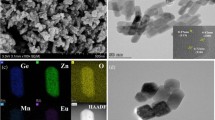Abstract
Contamination by deoxynivalenol (DON), a trichothecene mycotoxin produced by Fusarium species, occurs in cereals worldwide; therefore, efforts have been made toward the development of rapid and sensitive methods for the detection of this compound. In our investigation, optical waveguide lightmode spectroscopy (OWLS) technique has been applied to label-free detection of DON in both competitive and in direct immunoassay formats using DON-specific polyclonal antibodies. After immobilizing the antibody or the antigen conjugate for the direct or indirect measurement, the sensor chip was used in a flow-injection analyzer system. The direct method was found to result in an unstable sensor response and sensitivity insufficient to determine DON in different grains. In contrast, a competitive immunosensor format provided reproducible quantitative detection in the sub-ppt range. For competitive sensor investigation with the sensitized chip, first the optimal dilution rate of polyclonal antibodies was determined. For the measurements, antibody stock solution was diluted to 8 μg mL−1. During the competitive measurement, standard solutions were mixed with the antibodies at the appropriate concentration, and the mixture was incubated for 1 min and injected into the OWLS system. The sensitive detection range of the competitive detection method was between 0.01 and 50 ng mL−1. After the establishment of the indirect method, spiked wheat flour samples were investigated. Results obtained with spiked samples showed that OWLS detection has a potential for quick determination of DON in wheat samples.






Similar content being viewed by others
References
D’Mello JPF, Placinta CM, Macdonald AMC (1999) Anim Feed Sci Technol 80:183–205
Schollenberger M, Müller HM, Rüfle M, Suchy S, Planck S, Drochner W (2005) Int J Food Microbiol 97:317–326
Papadopoulou-Bouraoui A, Vrabcheva T, Valzacchi S, Stroka J, Anklam E (2004) Food Addit Contam 21:607–617
Placinta CM, D’Mello JPF, Macdonald AMC (1999) Anim Feed Sci Technol 78:21–37
Scott PM, Kanhere SR, Tarter EJ (1986) J Assoc Off Anal Chem 69:889
Jiménez M, Mateo R (1997) J Cromatogr A 778:363–372
Krska R (1998) J Cromatogr A 815:49–57
Onji Y, Aoki Y, Tani N, Umebayashi K, Kidata Y, Dohi Y (1998) J Chromatogr A 815:59–65
Platiner RD, Maragos CM (2003) J AOAC Int 86:61–65
Vendl O, Berthiller F, Crews C, Krska R (2009) Anal Bioanal Chem 395:1347–1354
Krska R, Baumagartner S, Josephs R (2001) Fresenius J Anal Chem 371:285–299
Nakamura H, Karube I (2003) Anal Bioanal Chem 377:446–468
Baeumner AJ (2003) Anal Bioanal Chem 377:434–445
Ansari AA, Kaushik A, Solanki PR, Malhotra BD (2010) Bioelectrochemistry 77:75–81
Mak AC, Osterfeld SJ, Yu H, Wang SH, Davis RW, Jejelowo OA, Pourmand N (2010) Biosens Bioelectron 25:1635–1639
Actis P, Jejelowo OA, Pourmand N (2010) Biosens Bioelectron. doi:10.1016/bios.2010.08.016
Gaag B, van der Spath S, Dietrich H, Stigter E, Boonzaaijer G, Osenbruggen T, Koopal K (2003) Food Control 14:251–254
Kadota T, Takezawa Y, Hirano S, Tajima O, Maragos CM, Nakajima T, Tanaka T, Kamata Y, Sugita-Konishi Y (2010) Anal Chim Acta 673:173–178
Brecht A, Gauglitz G (1997) Anal Chim Acta 347:219–233
Tiefenthaler K (1992) Adv Biosens 2:261–281
Vörös J, Ramsden JJ, Csúcs G, Szendrő I, De Paul SM, Textor M, Spenser ND (2002) Biomaterials 23:3699–3710
Luppa PB, Sokoll LJ, Chan DW (2001) Clin Chim Acta 314:1–26
Duveneck GL, Abel AP, Bopp MA, Kresbach GM, Ehrat M (2002) Anal Chim Acta 469:49–61
Lukosz W, Tiefenthaler K (1983) 2nd ECIO. Florence. IEE Conf Publ No. 227. London 152
Ramsden JJ (1999) Chimia 53:67–71
Trummer N, Adányi N, Váradi M, Szendrő I (2001) Fresenius J Anal Chem 371:21–24
Bradford M (1976) Anal Biochem 72:248–254
Harboe N, Inglid A (1973) Scand J Immunol 2(suppl1):161–164
Székács A, Trummer N, Adányi N, Váradi M, Szendrő I (2003) Anal Chim Acta 487:31–42
Commission Regulation (EC) No 1881/2006 of 19 December 2006 setting maximum levels for certain contaminants in foodstuffs. Off J Eur Union L364/5
Acknowledgments
This work was supported by the National Research and Technology Agency (EGERFOOD Regional Knowledge Centre) and by MicroVacuum Ltd. (http://www.microvacuum.com) by supplying OW2400 STO-coated sensor chips and measuring time on OWLS 100 instrument. The antibody was produced by the Unit of Biology (CFRI).
Author information
Authors and Affiliations
Corresponding author
Rights and permissions
About this article
Cite this article
Majer-Baranyi, K., Székács, A., Szendrő, I. et al. Optical waveguide lightmode spectroscopy technique–based immunosensor development for deoxynivalenol determination in wheat samples. Eur Food Res Technol 233, 1041–1047 (2011). https://doi.org/10.1007/s00217-011-1598-2
Received:
Revised:
Accepted:
Published:
Issue Date:
DOI: https://doi.org/10.1007/s00217-011-1598-2




